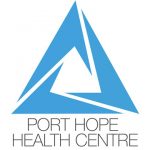Take the right steps to healing a sprained ankle
Recently I have noticed a number of young athletes coming into the clinic with acute ankle sprains.
For those young people who have sprained the same ankle in the past, usually our discussion will reveal what type of rehabilitation they completed before returning to sport after the previous sprain. It amazes me how often no progressive functional rehabilitation is completed before return to play.
Here is a basic game plan for a young athlete sustaining an ankle sprain.
Always have a health professional rule out fracture first. Missed fractures can cause long term functional problems later in life.
At this point, assuming a grade 1-2 sprain is sustained, the first step is called PRICE: Protection to prevent further damage; Rest from sport to allow recovery time; Ice; Compression; Elevation to help keep joint swelling down.
After following PRICE for three to five days, introduce basic range of motion exercises while the ankle is elevated.
Next, standing weight bearing on the ankle, perform slow calf raises on flat ground to activate the surrounding muscles, followed by walking if the athlete is able. It is important that tissues start to heal under lines of stress, but at the same time pain levels must be monitored as the athlete does not want to sustain a setback.
Once the above exercises are fairly pain-free, proprioceptive exercises should begin. This involves different combinations of balancing on the ankle using the muscles and tendons crossing the joint. These exercises help to further activate and strengthen the stabilizing muscles. This is an important step that is usually missed that helps to prevent the reoccurrence of ankle sprains.
The athlete should further progress through jogging, followed by running in a straight line.
Next, the athlete should start running in large figure eights. If no pain is felt, the figure eights should shrink in size to challenge the lateral stabilizers of the ankle.
If athletes are able to progress through these steps pain-free, they are ready to return to play.
Dr. Andrew Fagan is a licensed chiropractor, kinesiologist and clinical acupuncture provider. You can reach him at dr.fagan@porthopehealthcentre.com or 905-885-5111




